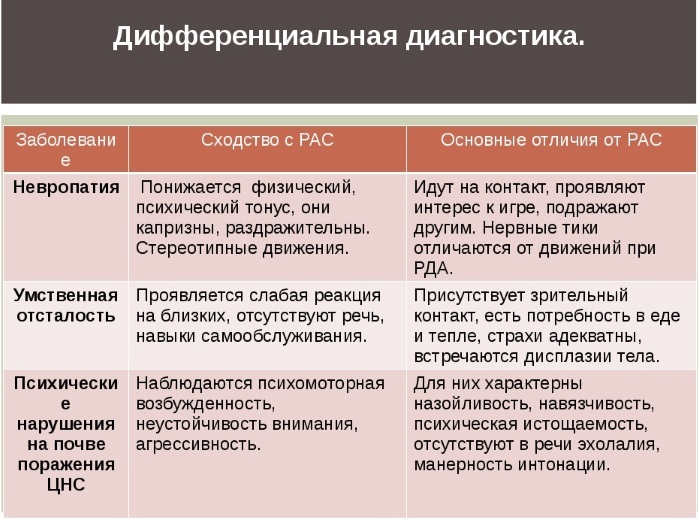FACTS AND STATISTICS
Anorexia (anorexia - an - negation prefix, orexis - appetite) in modern society have been widely artificial spread among young girls and women. The pursuit of beauty and the desire to look more lean women resort to exhausting the body starvation, low-calorie diets, artificially cause vomiting and frequent resort to gastric lavage.
Facts about the disease:
- About 20% of patients with this disease kills women.
- More than 50% of deaths are linked not with the anorexia and suicides on the background of a sense of guilt when consuming food.
- The main cause of death from the disease - acute heart failure.
- About 15% of women who are passionate about diet, as a result of ill anorexia.
- More than 75% of cases - a young girl of 20 years.
- At risk - modeling business workers.
- Patients with anorexia, as well as drug addicts, deny the existence of host disease and refuse to accept this condition as a disease.

- As the prevalence of the disease among adolescents among the top three among all chronic diseases.
- male adolescents susceptible to the disease at a ratio of 1 to 3 as compared with teenage girls.
- This disease is the antipode bulimia (Overeating reinforced nerves).
- Only one in ten sick seek medical care in the presence of anorexia symptoms.
- The Israeli state since 2012 at the legislative level has banned use in advertising images of models with excessive thinness.
- The seriousness of the disease also says that everyone in the world November 16 events held on the occasion of the fight against anorexia.
causes of anorexia
Anorexia disease mainly occurs on a background of mental disorders when trying to achieve the so-called "Ideal figure", can not help feeling that the weight of his body is too great for any human at the same time values.
Factors affecting the development of the disease:
- Intoxication.
- Diabetes.
- Anemia.
- Alcoholism and drug addiction.
- Thyrotoxicosis.
- Hormonal disruptions.
- Immunological disorders.
- Depressive states.
- Disorders in the endocrine system.
- Chronic renal dysfunction.
- Diseases of the digestive tract.
- Tumor with malignant course.
- Prolonged hyperthermia.
- Inflammation in the mouth and dental lesions.
- The defeat of the body helminths.
- Overdose of drugs (drugs with a high content of caffeine, sedatives, antidepressants, tranquilizers).
Among the rare but important factors further isolated hereditary predisposition. Early onset of menstruation in girls and properly chosen diet food in this period could also trigger the progression of the disease.

Psycho-emotional stress on a background of extremely low self-esteem often leads to the fact that a person begins his conscious and unconscious actions provoke the appearance of the disease.
CLASSIFICATION OF DISEASES
Struggle with anorexia helped distinguish the following forms of the disease.
By type:
- primary - the disease is diagnosed in teenagers on the background of hormonal failure, cancers and neurological disorders.
- psychic - malaise manifested against the background of complex psychiatric disorders.
- Morbid mental - patients experience severe weakness in the knowledge of hunger in the waking state; during sleep may be experiencing the so-called "wolf's appetite."
- dosage - arising in the use of drugs in the treatment of a wide range of diseases, common intentional use of therapeutic agents that block hunger.
-
nervous - currently the most common form of anorexia; disease occurs against the backdrop of an unhealthy desire to lose weight. This type of disease is developed in several phases:
- an initial - it takes place in the period from 2 to 4 years old, is characterized by an obsessive search for his body defects;
- anorectic - this phase is characterized by weight loss, which may be about 50%;
- cachectic - is characterized by a sharp weight loss, lack of subcutaneous fat, menstrual disorders, degenerative changes;
- reduction stage - the recovery stage, at this stage, the patient may be as completely cured of anorexia, and go into a deep depression in the background gaining weight.

SYMPTOMS
Anorexia person quickly loses about 15% of initial body weight, as one of the main symptoms of the disease is the complete lack of appetite.
The person in this state is constantly experiencing very weak and tired for no reason, women have significantly disrupted menstrual cycle, men also can suffer sexual dysfunction.
Other symptoms of anorexia:
- insomnia;
- obsessive desire to lose weight;
- excessive concern about weight of his body;
- problems in identifying feelings (patients can not distinguish hunger from sadness);
- periodic fluctuations in body weight (3 kg per month);
- unfounded aversion to previously favorite foods;
- unhealthy craving for laxatives;
- painful muscle spasms;
- muscle atrophy;
- very narrow fat layer below the skin;
- increased fragility of the nail;
- dry and brittle hair.
Meeting people with sunken eyes and a clear blue under them who have drawn much belly and protruding ribs, we can confidently say that they suffer from this disease.
The disease may be exacerbated by loss of teeth and lowering blood pressure. Patients characterized by sudden changes in mood and frequent fainting spells with loss of consciousness.
Neurological anorexia has a number of other symptoms which are peculiar only to her.
Neurological symptoms of anorexia:
- Permanent chill due to poor blood circulation in the body;
- Body temperature below 36.6 degrees;
- unusual growth of vellus hair on the body;
- constant urge to enhance physical exercise;
- strong irritation when it is impossible to reach the objectives;
- when choosing clothes preference overly spacious, not the size of the crosslinked baggy things.
Patients often appears insatiable aggressive when defending their beliefs about their own weight, which eventually develops into agoraphobia. This process eventually leads to a feeling of loss of control over their own lives.
DIAGNOSTICS
Despite the fact that such diseases as anorexia, is perceived as valid and acceptable in today's society condition of the body, we must not forget that this is still a disease that requires careful diagnosis and an appropriate treatment.
The main method of diagnosis of anorexia is a measurement of body mass index. This procedure implies a search for weight-for-height, squared. Normal BMI values are in the range between 18.5 and 25. All values that are less than the number 16 indicate anorexia.
Other methods of diagnosis:
- Clinical blood and urine analysis.
- Determination of hormone levels.
- Radiography.
- Gastroscopy.
- Esophageal motility study.
- Electrocardiogram.
Diagnosis of patients with anorexia nervosa involves mandatory testing at the psychotherapist.
TREATMENT
Anorexia patients tested complex treatment which is directed to restoring and gradual physical state set of normal body weight.

anorexia treatment begins with a consultation at the psychotherapist, which should cause the patient to believe in the dangers of the disease and make treatment start. Medical therapy is performed in a hospital under constant supervision of the attending personnel.
Drug treatment:
- Constant psychological support.
- Return to normal eating.
- Work on the set of a healthy body weight.
- The conclusion of the doldrums.
- Psychotherapy with family members.
- Constant care.
- Support for the patient.
Medication:
- Antidepressants.
- Multivitamin complexes.
- Neuroleptics.
- Antipsychotics.
- Atypical antipsychotics.
- Hormonal substances.
In the treatment should take into account the fact that anorexia is a disease for which medical treatment is recommended in very limited doses. This is due to the fact that the withdrawal from the body of chemicals can be complicated because of the strong attenuation of the organism and its inability to cope with such problems on their own.
Clinical nutrition begins with the reception of low-calorie products in limited doses with a gradual increase. In severe cases, anorexia allowed intravenous nutrients in the body.
dangerous complications
The main complications that result from the disease:
- disruptions to the cardiovascular system;
- serious edema of the limbs due to lack of proteins in the body;
- malfunction of the digestive system;
- increased fragility of bones, frequent fractures;
- reduction in brain mass, irreversible damage in its work;
- severe prolonged depression, "loss of self" predsuitsidalnoe mood;
- disruption of the endocrine system;
- loss of fertility;
- vitamin deficiencies.
Anorexia is the cause of most suicides among adolescent people.
Documented cases where recover from anorexia began intensively to eat, which eventually led to the development of another disease - bulimia.

PREVENTION OF ANOREXIA
Given that during the anorexic body is exposed to extremely high loads, and the treatment process is not in all cases ends recovery, prone to malaise persons are advised to abide by a set of preventive measures aimed at avoiding serious manifestations this disease.
Preventive measures:
- regular consultation with the therapist;
- balanced diet, high food culture;
- avoiding strong stresses;
- Any diet should be consistent with an expert nutritionist;
- moderate alcohol consumption, a full cessation of smoking and administration of narcotic substances.
FORECAST FOR RECOVERY
Taking into account the fact that for a disease lurking dangerous mental disorder, prognosis for recovery is not entirely favorable. Quite often occur in patients with recurrent disease, which can lead to death. Patients should be aware of what anorexia, what exactly is it a danger to successfully fight the disease.
When favorable psychological atmosphere created by the close people, the chances of a full recovery and a lack of future relapses is very high.
Found a bug? Select it and press Ctrl + Enter



